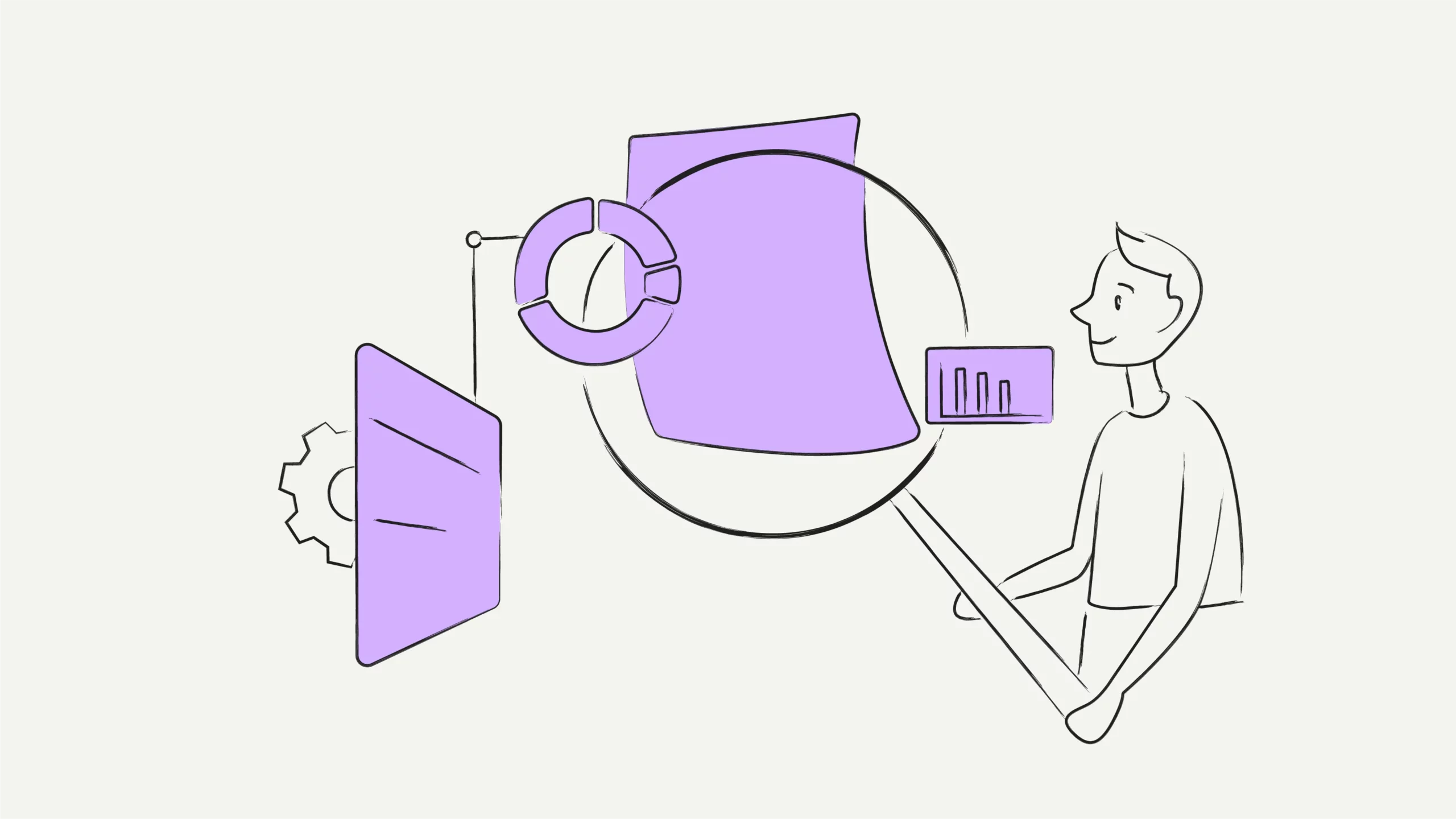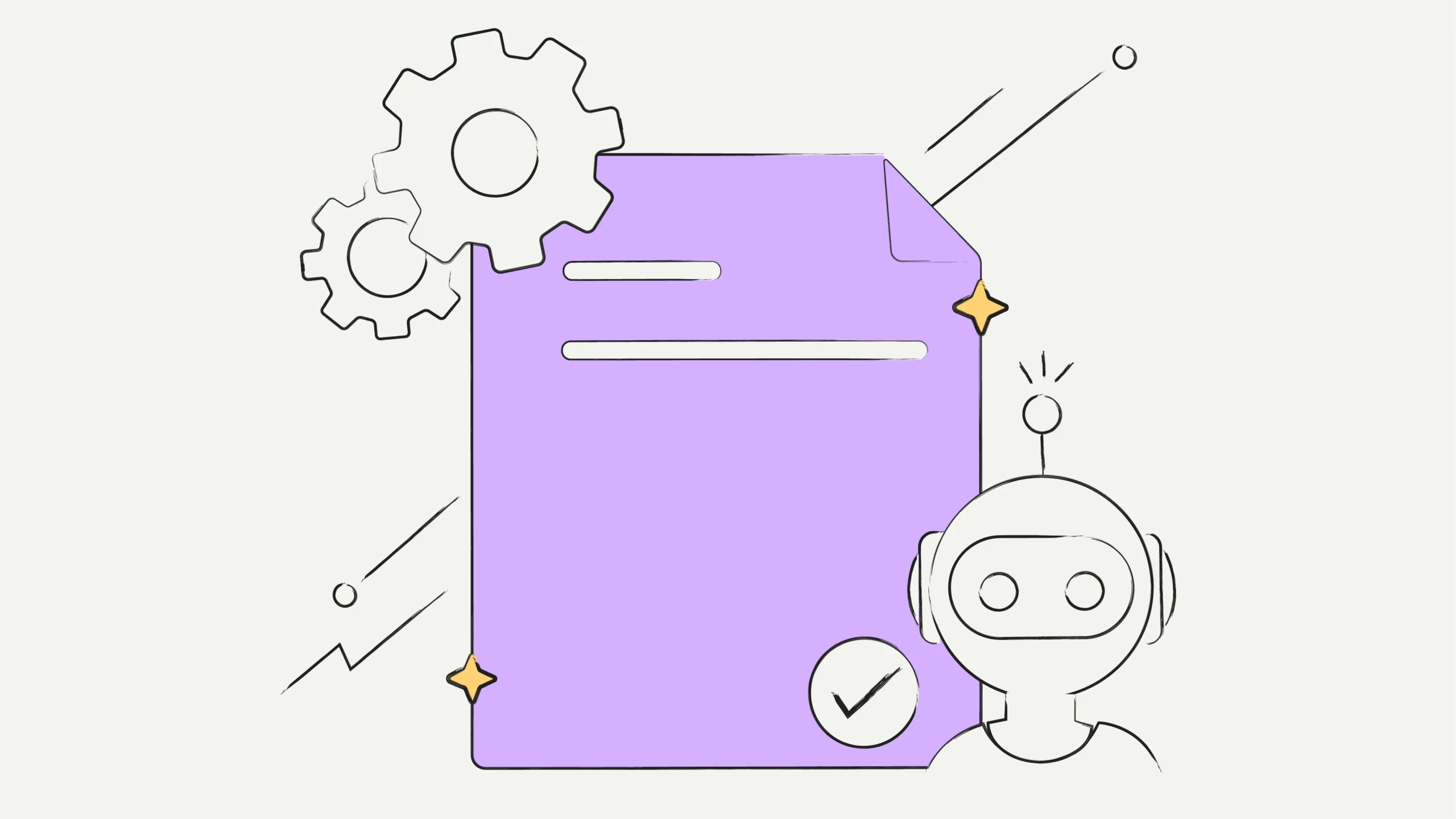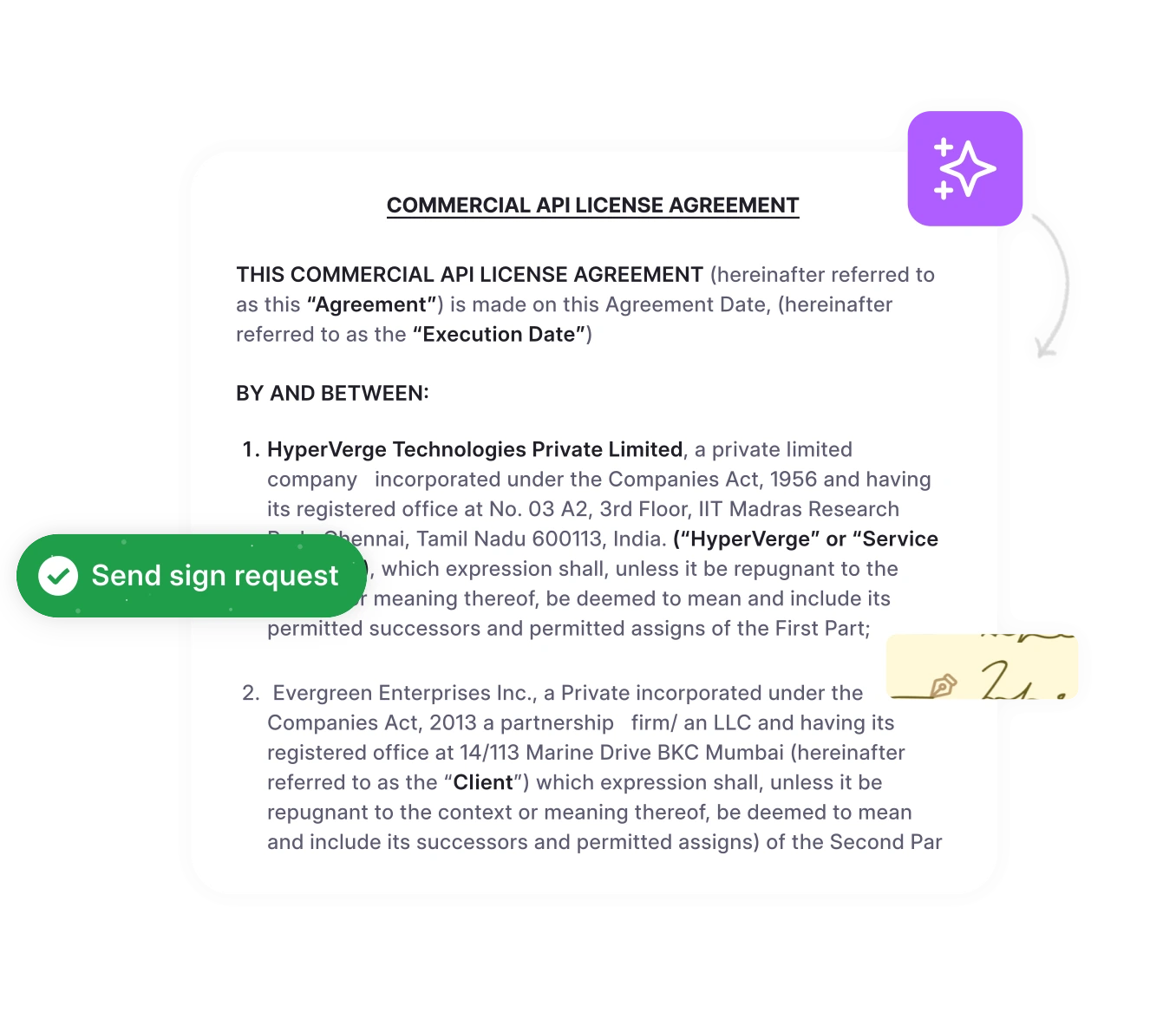Are you a contract manager, part of a legal team, or an executive? Do you find yourself asking important questions like:
How are contracts performing?
What are the bottlenecks in the contract management process?
What is risk exposure?
An effective solution to these questions is contract analysis. It helps gain valuable information about contractual performance, measure deviation, and derive strategies. If you want to know how to analyze your agreements, keep reading.
An effective solution to these questions is contract analysis. It helps gain valuable information about contractual performance, measure deviation, and derive strategies. If you want to know how to analyze your agreements, keep reading.
Let’s help you understand what agreement analysis is and how it differs from reviewing a contract.
What is contract analysis?
Contract analysis is a process of reviewing, interpreting, and evaluating contracts to extract valuable information, assess compliance, identify risks, and optimize performance. This systematic approach helps businesses understand the terms and conditions of their agreements. Not only this, but it also ensures that legal and business requirements are met and decision-making related to contract management is improved.
Analyzing an agreement is an important component of contract performance management. This process focuses on optimizing an organization’s entire contractual performance and ensures effective compliance. Let’s discuss the process followed for contract analysis.
How contract analysis works and how AI contributes to the process
Contract analysis transforms legal documents into actionable and valuable insight using AI and natural language processing (NLP). Having reliable contract lifecycle management tools helps you scan existing contracts and map the contracts to specific templates using NLP. This process allows the software to identify language discrepancies that may present liabilities.
Also, contract analytics software improves searchability, which allows users to locate and analyze contract terms across their entire contract repository and proactively identify potential risks. Let’s discuss the process of analyzing a contract.
Data extraction: Scans contracts and converts them into searchable text.
Template mapping: Maps existing contracts to standard templates to identify discrepancies.
Issue identification: Flags inconsistent terms and definitions across contracts.
Alert mechanisms: Notifies users of contract violations or upcoming expirations.
Search functionality: Makes key terms searchable for quick access.
Performance measurement: Evaluate contract performance with the defined contract management KPIs.
Relying on traditional manual analysis leads to a time-consuming and error-prone process. AI addresses these challenges by integrating machine learning and NLP into the contract analysis process. Optical character recognition (OCR) technology converts scanned documents into editable texts while AI algorithms extract contract metadata like terms, dates, clauses, and warranties.
This contract data extraction helps businesses quickly find insights that strengthen future agreements. By integrating AI technology, businesses optimize contract performance, mitigate risks, and improve their entire contract management strategies.
How does contract analysis differ from contract review?
| Aspects | Contract Analysis | Contract Review |
| Purpose | To gain insights into CLM performance. | To ensure the contract’s legal accuracy and negotiate better deals. |
| Focus | Identifies patterns, risks involved, and performance metrics. | Checks individual clauses, terms, obligations, and legal factors. |
| Scope | Involves assessing multiple contracts across a time period. | Limited to an individual contract. |
| Outcome | Strategic insights on contract performance. | Ensures legally compliant and favorable contracts. |
| Example | Analyzing a company’s contracts to assess risk exposure. | Reviewing a vendor contract for legal accuracy. |
So while analysis focuses on achieving insights from contracts, reviewing centers around ensuring contracts’ compliance and favorability. However, why should an organization analyze its contracts? Keep reading to find out.
Why is contract analysis important for your business agreements?
Here are the benefits of contract analysis and how it improves your entire contract management strategy.
Tracks obligations and key dates for contract management
If questions like “How much payment is due from my clients?” and “How many of my contracts will expire this quarter?” strike you now and then, you are taking a chance with your contractual obligations, possibly missing a few. Analytics help solve this problem by extracting, visualizing, and reporting key contract obligations, ensuring your agreement commitments are fulfilled.
Improves decision-making in contracts
Analytics help improve future contracts by giving contract managers, business executives, and other stakeholders insights into current contract performance. The actionable insights serve as grounds for strategic planning, enabling organizations to make informed decisions for their CLM processes.
Identifies cross-selling opportunities
Contract analytics help maximize sales by enabling organizations to cross-sell their products and services. By understanding consumer behavior, deal patterns, and market demographics, brands can discover new opportunities to cross-sell their offerings.
Ensures legal compliance in agreements
With continuously changing business objectives and regulatory laws, contracts need to be updated. This is especially the case with organizations operating in regulated sectors like healthcare, fintech, banking, and legal. Analytics helps detect and rectify incompliant contracts—using outdated language, missing new laws, and containing legal loopholes to derisk them.
Boosts negotiation power with data-driven insights
The insights derived from contract analysis and negotiation help improve the contract negotiation process. Processing historical contract data enables contract managers to locate the most profitable contracts. Replicating the contract language, terms, and clauses of these particular contracts is useful for improving negotiation stance and growing business revenue.
Use smart contract management software like HyperStart CLM to uncover patterns in your historical agreements. By replicating successful terms and clauses, you can improve your negotiation strategies. Plus, take advantage of the smart alert feature to stay on top of renewal deadlines and payments to ensure you never miss important data again.
Enhances contract visibility for better management
As per a 2023 report by World Commerce and Contracting, 48% of organizations investing in their CLM processes are doing so for better contract visibility. Analysis helps turn stacks of contracts into organized information. By extracting and processing important terms, businesses get access to actionable data.
Turn Contracts Data Into Insights
Analyze contracts automatically and get unique intelligence into your contract performance.
Analyze Contracts Smartly with HyperStart CLM
Analysis helps improve your CLM strategies and guides future contracting processes. By analyzing contractual performance, you can make informed decisions that enhance compliance for your organization, particularly in areas like contract risk management and cost efficiency.
HyperStart CLM is one of the best contract analytics software that assists you in achieving these objectives. Be it managing contracts on a day-to-day basis or turning contracts into data-rich insights, HyperStart CLM is your reliable solution. Leverage HyperStart’s smart AI and machine learning tech and turn contracts into insights. Here are a few highlights of HyperStart:
99% accurate AI engine
80% less contract admin time
5x faster contract TAT
$20 saved per contract
Still in doubt? Check out how HyperStart transformed Qapita by enabling their transition from manual contract management to automated solutions. This leading digital equity management platform faced challenges like limited bandwidth, a huge number of contracts, and a non-supportive CLM partner.
HyperStart CLM facilitated a smooth implementation process to allow the company to integrate numerous contracts using the bulk upload feature. The immediate AI extraction of metadata impressed the team and improved productivity. Here is a testimonial from their company secretary.
Implementation was very smooth. Using the bulk upload feature, all contracts were integrated into the system within minutes. I could also see the AI-extracted metadata on the tool immediately, which was impressive.

Mayuri Jaltare
Company Secretary at Qapita
If you are also looking for a solution that streamlines your contract management processes while providing powerful contract analysis capabilities, try HyperStart CLM. Book a free demo today.
Frequently asked questions
Here are the common challenges in contract analysis.
- Lacks effective management of large volumes of contracts.
- Unable to ensure data accuracy which results in legal and financial implications.
- Experiences difficulty in identifying inconsistencies in terms and definitions with contracts.
- Fails to maintain compliance with regulatory requirements.
- Has difficulty tracking obligations which leads to missed deadlines.
Here are the metrics to track contract analysis to enhance your contract management process.
- Evaluate how well contracts meet established key performance indicators.
- Monitor adherence to terms and conditions outlined in the contracts.
- Keep track of important dates to avoid lapses in agreements.
- Assess pricing structures, payment schedules, and any financial implications.
- Identify potential legal and financial risks associated with contract terms.












